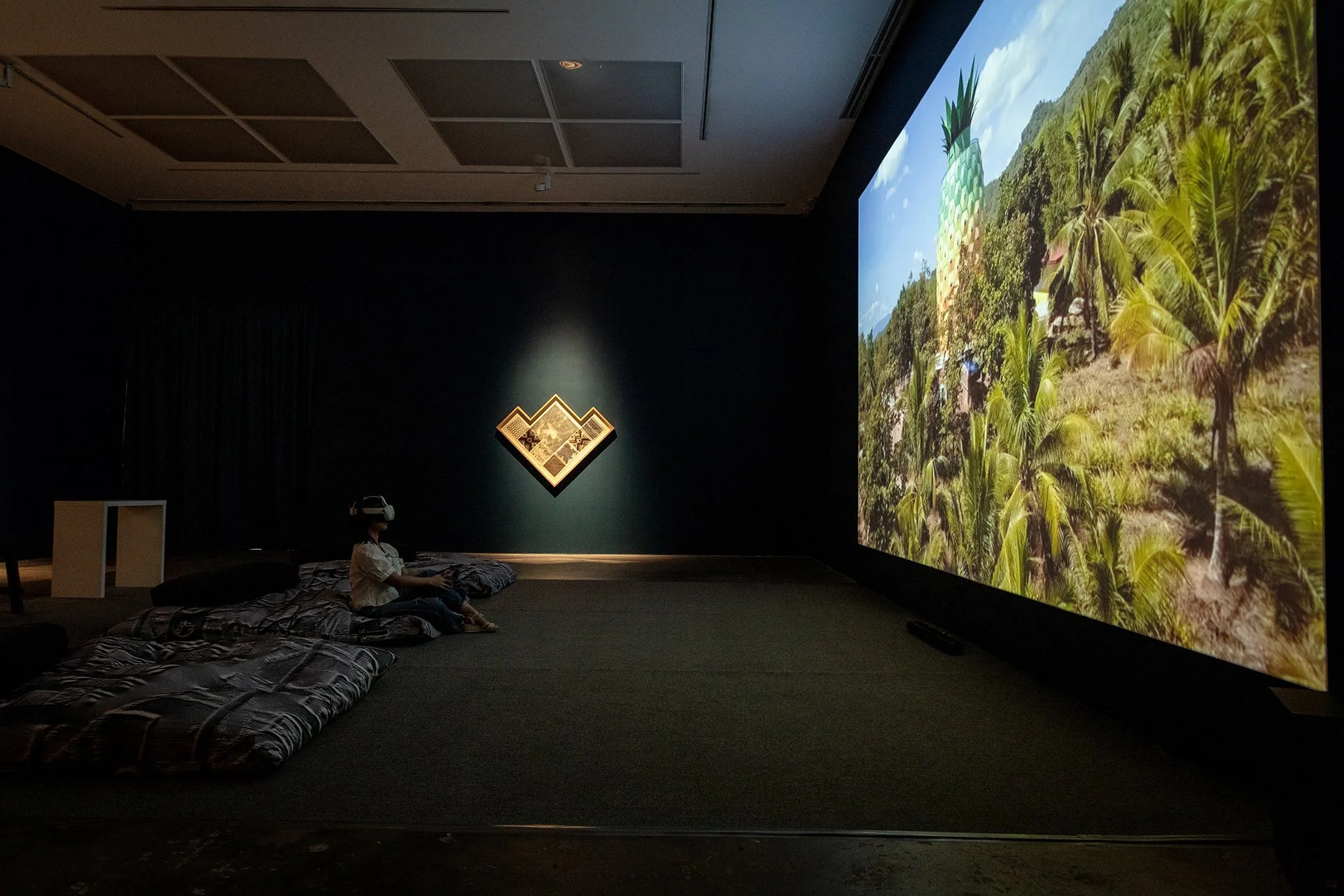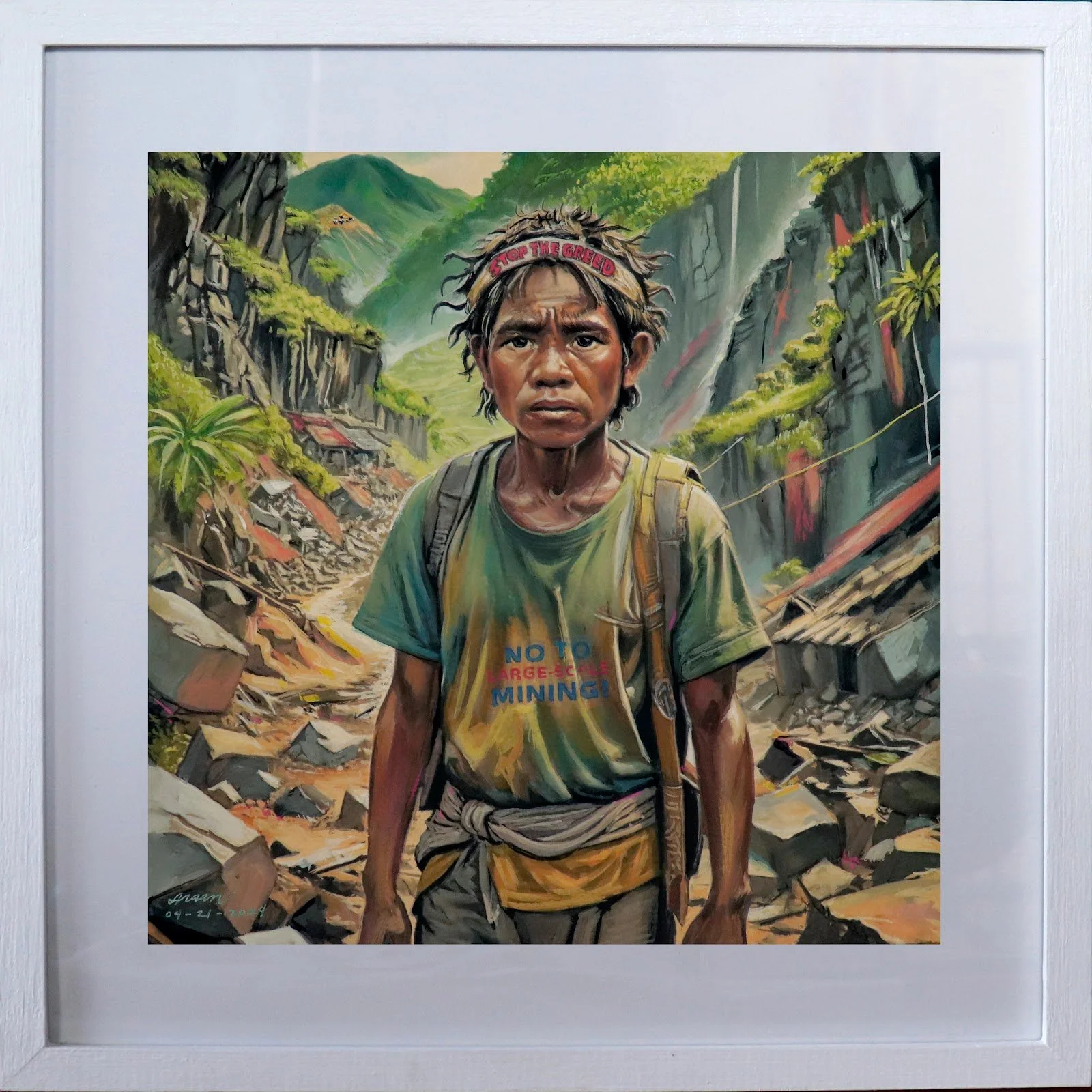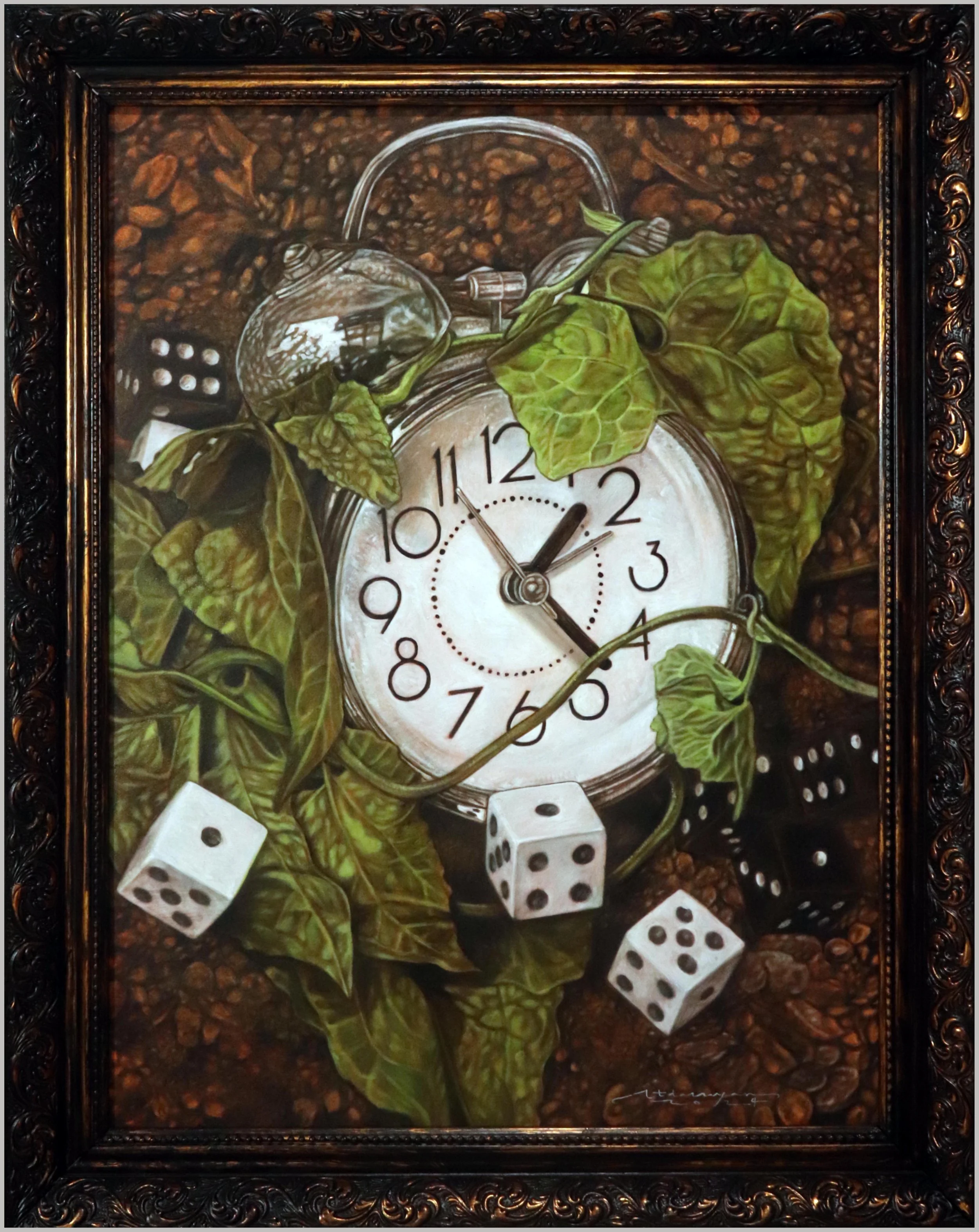The World According to…: Exhibitions in May 2024
Words Amanda Juico Dela Cruz
May 27, 2024
“Piña, Why is the Sky Blue?” by Stephanie Comilang and Simon Speiser at Silverlens
Some artists observe and record their world through their art practice. It is their way of processing and making meaning out of their lived experiences. Some use art to convey their visions and hopes. Perhaps, their works are born out of their frustrations and resistance. Art is used by some artists to seek for truths and Truths, and to deconstruct the established order because they have mustered the courage to question the “what is.”
Installation shot of The World According to Charlie Co, AAG 2020 4
“The World According to Charlie Co” by Charlie Co at the Ateneo Art Gallery
With nearly four decades-worth of art on display, Charlie Co recorded his life in Bacolod, navigated the socio-political situations in his home country, and pondered on global and environmental issues in his practice. His creations are meant not just for public consumption, but more as his playful yet integral way of processing his own lived experiences and musings. He built worlds through the images he had seen, emotions he had felt, and experiences he had connected to, all rendered in expressionist and surrealist modes. Unsettling and melancholic at times, one cannot help but form a visceral connection with their narratives.
“Piña, Why is the Sky Blue?” by Stephanie Comilang and Simon Speiser at Silverlens
Piña is a spiritual medium. And Piña is a form of artificial intelligence. Piña receives and stores knowledges and dreams of people so they could survive. Piña, Why is the Sky Blue? is a speculative documentary where eco-feminist’s vision of keeping indigenous knowledge and where modern world’s visions of advanced forms of artificial intelligence meet. Activists and healers from Cyber Amazonas in Puyo and from Las Martinas de Piedras Negras in Quito, and shamans from Palawan are interviewed and documented, emphasizing how knowledge is passed down, preserved, and practiced from the precolonial times up to the postcolonial era by women.
“Walking is a Dwelling” by Pope Bacay at ArtInformal
A blue sofa. Snow-capped mountains. A pristine lake. Antique candle holders. Ravaged armchair. Windows. Walls. Doorways. Pope Bacay observed and documented what he saw in his walks in Europe. And in these walks, he dwelled on the discarded items—the waterlogged, the ruined, and the disposed, but also the immaculate, the visceral, and the most-cherished. The junked items, when put together, collectively evoke a sense of home. His collaging of these seemingly disconnected objects is reminiscent of assembling a structure, of building a home, of storing of memories for these objects themselves are actual holders of their past owners’ memories.
Maan De Loyola
“Dambana” by Alee Garibay, Brian Barrios, Buen Abrigo, Frances Abrigo, Grasya Marinda, Iggy Rodriguez, Jes Aznar, Maan De Loyola, Mervin Pimentel, Mideo M. Cruz, Racquel De Loyola, and Uri Deger at Altro Mondo Arte Contemporanea
The exhibition incites profound introspection from its visitors: How does our culture provide the blueprint for our perception of worship? How does our economic status affect how we build our personal shrines? How has the society built the foundation and pillar to how we relate to all that is divine and holy? Worship, the places where we do it, and how we do it have evolved from the day the conquistadores baptized our ancestors to the contemporary time when we have mustered the guts to question religion and faith, something that the artists attempt to do in their group exhibition.
Argee Dacuyan, “Time reveals everything”
“Dalumat” by Argee Dacuyan, Honey Maglalang, Kadi Santos, and Kevin Villa, and curated by Renato Habulan at Vantage Contemporary
Some seek for Truths and for truths about politics, economy, and history in statistics and in theories—the most objective forms of deep thinking among the intellectuals. Dalumat in this exhibition is deeper than studies and research for these objective endeavors have deliberately left out the subjective, that is, the lived experiences, which are arguably more important than any intellectual masturbation. Images, figures, colors, lines, and textures sprung from the most fundamental concerns of the most ordinary people—food, shelter, family, livelihood, possessions, attitudes and customs, and the spiritual. Truths and truths are found in the everyday, the artworks argue.
Maryrose Gisbert, “SUMAN”
“Connections” by ARTitude Group of Artists: Annette Aguado, Angela Amor, Isabel Campa, Rene Canlas, Daisy Carlos, Kim Carlos, Kris Ian Carlos, Nida Cranbourne, Eva Millan Dantes, Lourdes Delgado, Rhea Jai Fernandez, Kathy Garrido, Mitz Garrido, Ysa Gernale, Maryrose Gisbert, Joanna Hirsch, Esther Leynes, Chiqui Lizada, Pit Montinola, Clara Mortesen, Marinette Garrido Ortigas, Arianna Quintal, Gigit Sales, Audrey Sin, Patricia Tan, Ottilia Taus, and Annabelle Wisniewski at ArtistSpace
Each element in the universe is linked to another element in the universe and they can form interrelated or independent links with other elements. They can be causal or visceral relationships. From human to human: mother and child, wife and husband, lovers and partners; from human to animals: owner and their beloved puppy, jogger and butterfly, predator and prey; from human to nature: swimmer and sun, yogi and wind, passerby and flowers; even from human to divine. The exhibition invites the viewers to the private world of the artists who meditate on connections formed and lost, cherished and burned.







